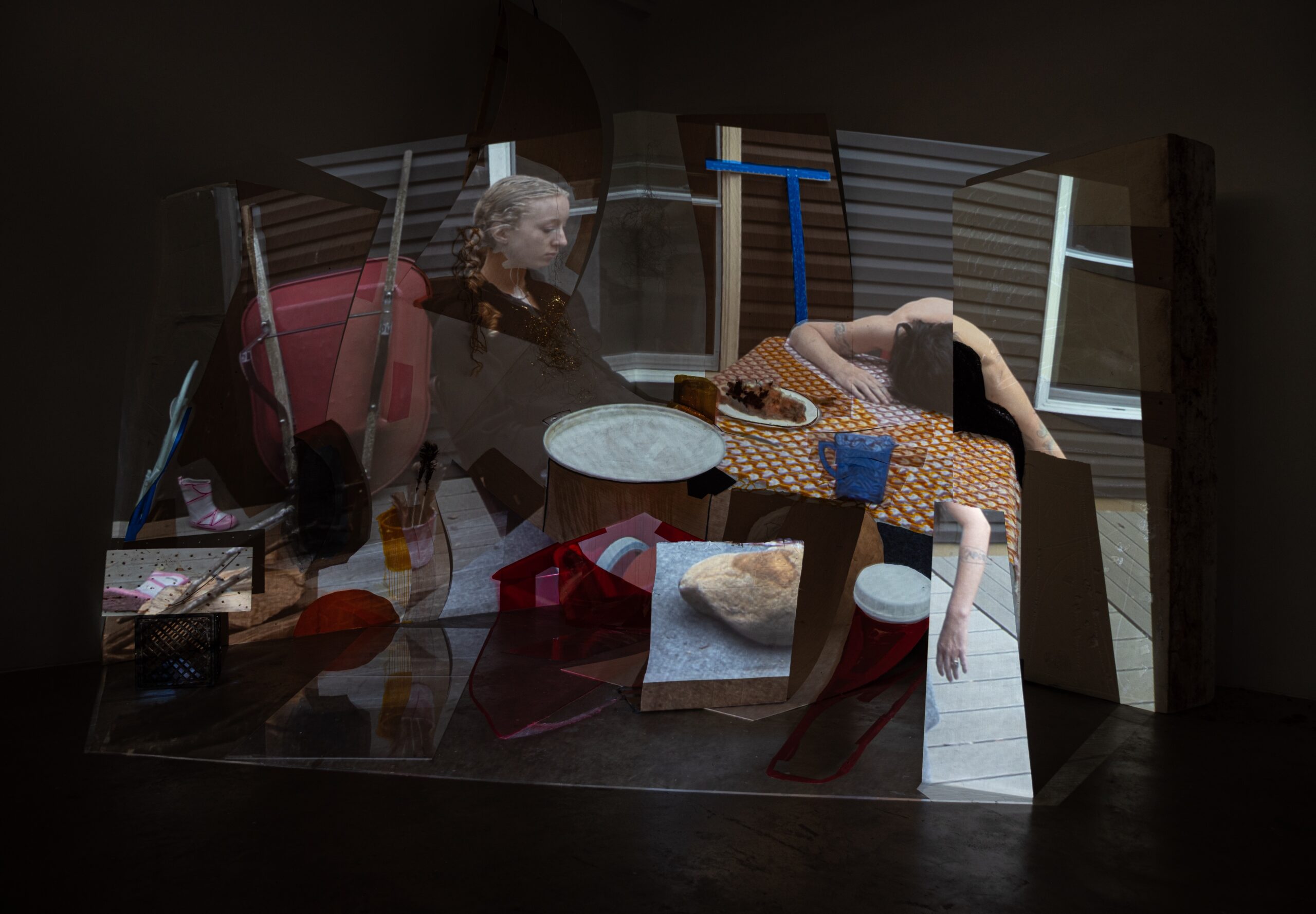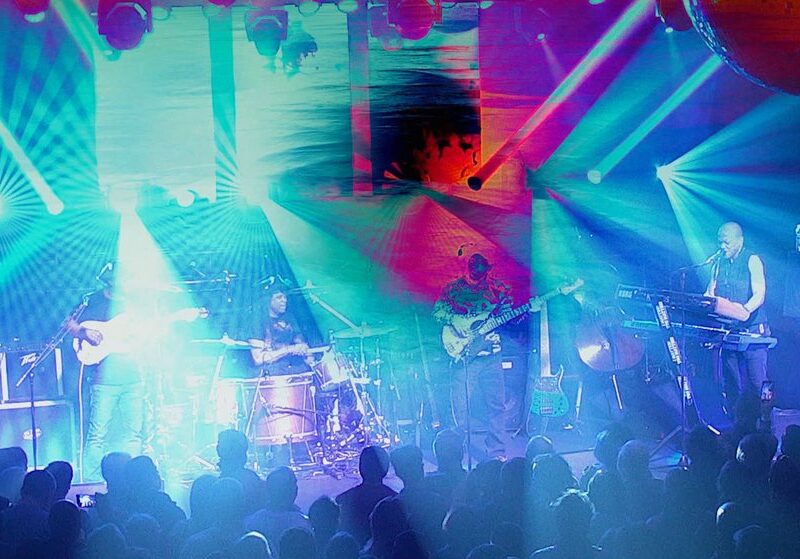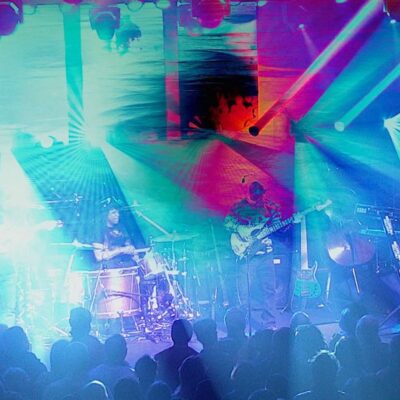“Return of the Triumphal Mother” at Visible Records shares a series of new works by Dani and Sheilah ReStack, including a site-specific projection installation. The exhibition by the ReStacks, who are life partners as well as frequent artistic collaborators, “continues their imagining of queer family, desire, relationship and fantasy.”
In service of this, the artists engaged in a call-and-response form of production—creating works that are simultaneously distinct and connected—offering audiences a single-channel video projected over an installation, along with a collection of six photograms, a two-dimensional drawing, and a mixed media work combining two-dimensional and sculptural elements.
A tall black curtain bisects the gallery. In the darkened space beyond, an installation of wood, plexiglass, cardboard, rocks, and various other materials sourced from in and around Visible Records acts as a screen for the looping video projected across its surfaces. The projection cuts out at multiple instances, revealing the artifice behind, where physical objects are unveiled as both ground and accentuating elements when the video resumes. In the intervals where the video drops out, the space brightens, and the installation becomes its own three-dimensional drawing.
The video presents a scene with two women sitting at a table. On the left, a teenager with blond hair pulled into a braid stares with alternating expressions of discomfort and disinterest. She intermittently pokes at a plate of undistinguishable food in front of her. She takes a small bite. She drinks from a glass, and presents a look of slight disgust.
The other woman’s face is never revealed. She lies prone with her head on the table, turned to the right away from the camera, her dark hair loosely cascading off the tabletop. She barely stirs; the fingers on her left hand, hanging limply off the side of the table twitch slightly before balling into a fist. A small black dog trots in and out of the frame.
In the background, various visual elements present themselves: a red wheelbarrow, a pair of children’s pink rain boots, a bucket holding feathers. The figures occupy a space outdoors, sitting in front of vinyl siding and white window frames. A tangle of copper wire suspended from the gallery ceiling occupies aerial space in the front-center of the installation.
The exhibition text says the work invites viewers to sit in on a shared meal with members of the ReStack family. It then asks questions that may be at the forefront of viewers’ minds: “What is wrong with this woman who is responsible for the family? Why is she dripping and folded while her children carry on with their meal; oblivious?”
The roughly nine-minute long audio loop that accompanies the video offers few answers to these questions, if any. Instead, audiences must once again turn to the exhibition text for the context necessary to frame a reading of the work.
The voiceover track does, however, connect to the photogram works that grace the gallery walls outside the partitioned projection space. Using plants sourced from roadsides and alleyways, the photograms (images made without a camera by placing an object directly on to the surface of a light-sensitive material and then exposing it to light) spell out the words “no shape to call this song.” The audio emanating from beyond the curtain offers information on how these plants have historically been used as spices or livestock feed. These histories are interwoven with personal anecdotes about life, love, and family.
The words spelled out in the photograms create the title for Dani ReStack’s drawing, which acts as “another articulation of desire and attempt at connection.” Titled “No Shape to call this Song,” it presents a work on paper rendered in childlike marks depicting a tangle of segmented bodies.
Another piece, “Star Cabin at Subamuh, Ohio,” is built around a black-and-white photograph printed on soft felt. A thick piece of rectangular plexiglass laid over an image of a child’s bent arm creates a window to focus through. A piece of red terracotta clay, shaped by hand and incised with crisscrossing marks sits on a small metal shelf within the composition. The work imparts notions of both labor and leisure—the responsibilities of adulthood communicated through a grown figure juxtaposed with the carefree nakedness of youth.
The works in “Return of the Triumphal Mother” are layered—both literally and metaphorically. The fractured compositions of the installation and wall-mounted pieces present difficult reads that are recognizable as interconnected, yet remain discreet. In considering the exhibition as a reflection of family life, we come to recognize the performative nature the individual works take on in creating the overall understanding of the show: Domesticity can be difficult.
The ReStacks present a collection of works that are deeply personal, created in collaboration and in response to one another. Here, the artists illustrate the blurring of art and life, gesturing toward family as a phenomenon that is mutually constructed, at times a little messy, but ultimately something worth building and holding on to as we parse through the meaning of things.
“Return of the Triumphal Mother” by Dani and Sheilah ReStack remains on view at Visible Records through August 23, 2025. Photo: Courtesy of the artists.






